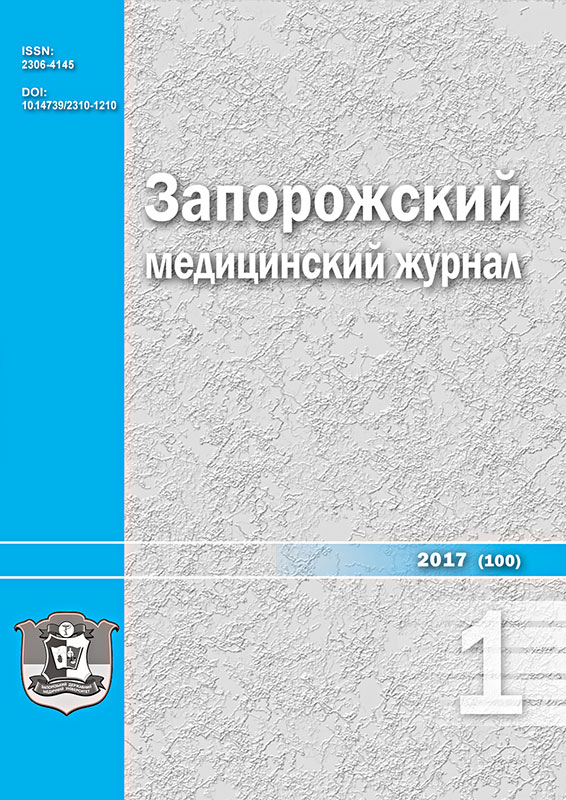Identification of phytosterins in Urtica dioica L. (overground part)
DOI:
https://doi.org/10.14739/2310-1210.2017.1.91723Keywords:
urtica dioica L., chromato-mass-spectrometry, phytosterinsAbstract
Long since Urtica dioica L. was used in folk medicine as vitamin and hemostatic agents. Nowadays hypotensive, diuretic, antitumoral effects of medicines obtained from plant based raw materials from Urtica were experimentally proved. Pharmacologic activity is due to vitamins K1 and C, flavonoids, hydroxycinnamic acids, carbonic acids, polysaccharides containing in the leaves of plant. Using underground organs of plant as antineoplastic drugs is connected with phytosterins accumulation. Studying composition and assessment of phytosterins in overground part of plant is urgent now.
The aim of research is to identify components and to assess phytosterins content in leaves and herb of Urtica dioica L. in Ukrainian flora.
Materials and Methods. For chromato-mass spectrometry leaves and herb gathered in blossoming period have been used. The samples have been extracted with methylene chloride in presence of tridecane inner standard, and then the samples have been concentrated and submitted to chromatography on chromatograph Agilent Technology 6890N. The components have been identified using register for mass spectra NIST02 and WILEY2007 in combination with identification programs AMDIS and NIST.
Results and Discussion. In both types of raw materials from Urtica dioica L. it has been revealed identical compounds related to olefins, higher aliphatic carbohydrates, phytosterins and so on. The total amount of biologically active substances extracted from the leaves is 529.76 mg/kg, from herbs it is 516.91 mg/kg. Untriacontane, nonocosane and trans-neophytadiene were predominant. Phytosterins stigmas-3,5,7-triene, campesterol, β-sitosterol presented in leaves 16.14 mg/kg, in herb they presented 15.42 mg/kg, that forms 3% approximately
Conclusions. Composition and amount of phytosterins containing in leaves and herb of Urtica dioica L. study has been performed by chromate-mass-spectrometry. As a result three compounds of steroid nature have been identified: stigmas-3,5,7-trien, campesterol, β-sitosterol. Amount of phytosterins is approximately 3 %.
References
Nencu, I., Vlase, L., Istudor, V., & Mircea, T. (2015). Preliminary research regarding Urtica urens L. and Urtica dioica L. Farmacia, 63(5), 710–714. [in Russian].
Smoilovska, G. P. (2015). Doslidzhennia yakisnoho skladu ta kilkisnoho vmistu karbonovykh kyslot v lysti Urtica dioica L. [Study for quality and amount of carbonic acids in the leaves of Urtica dioica L.]. Current issues in pharmacy and medicine: science and practice, 3(19), 48–51 [in Ukrainian]. doi: http://dx.doi.org/10.14739/2409-2932.2015.3.52675.
Derzhavne pidpryiemstvo „Ukrainskyi naukovyi farmakopeinyi tsentr yakosti likarskykh zasobiv” (2015). Derzhavna Farmakopeia Ukrainy [State Pharmacopoeia of Ukraine]. Kharkiv [in Ukrainian].
(2014). European Pharmacopoeia. Strasbourg.
Trineeva, O. V., Slivkin, A. I., & Safonova, E. F. (2015). Opredelenie gidroksikorichnykh kislot, karotinoidov i khlorofilla v list´akh krapivy dvudomnoj (Urtica dioica L.) [Determination of hydroxycinnamic acids, carotenoids and chlorophyll in the leaves of stinging nettle (Urtica dioica L.)]. Khimiya rastitel´nogo syr´ya, 3, 105–110 [in Russian].
Skalozubova, T. A., Marakhova, A. I., Sorokina, A. A., & Fedorovsky, N. N. (2012). Polisakharidy v list´yakh i nastoe krapivy dvudomnoi [Polysaccharides in stinging nettle (urtica dioica) leaves and infusion]. Farmaciya, 2, 5–7 [in Russian].
Balagozyan, E´. A., Kurkin, V. A., & Pravdivceva, O. E. (2016). Soderzhanie sterinov v syr´e krapivy dvudomnoj [The content of sterols in the raw materials of Urtica dioica L.]. Khimiya rastitel´nogo syr´a, 2, 67–71 [in Russian].
Balagozyan, E´. A., Kurkin, V. A., Pravdivceva, O. E., & Ryzhov, V. M. (2016). Razrabotka podkhodov k standartizacii korenevishch s kornyami krapivy dvudomnoj [Development of approaches to the standardization of the rhizomes and roots of Urtica dioica L.]. Aspirantskij vestnik Povolzh´ya, 1–2, 239–241 [in Russian].
Downloads
How to Cite
Issue
Section
License
Authors who publish with this journal agree to the following terms:
Authors retain copyright and grant the journal right of first publication with the work simultaneously licensed under a Creative Commons Attribution License that allows others to share the work with an acknowledgement of the work's authorship and initial publication in this journal. 
Authors are able to enter into separate, additional contractual arrangements for the non-exclusive distribution of the journal's published version of the work (e.g., post it to an institutional repository or publish it in a book), with an acknowledgement of its initial publication in this journal.
Authors are permitted and encouraged to post their work online (e.g., in institutional repositories or on their website) prior to and during the submission process, as it can lead to productive exchanges, as well as earlier and greater citation of published work (See The Effect of Open Access)

